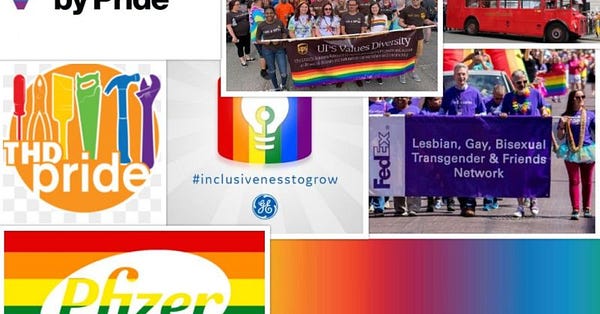
Of all the writers who use Substack, no one is as good at promoting their newsletter as Judd Legum, publisher of Popular Information. Judd was previously the editor-in-chief of ThinkProgress and has also been a political campaign researcher and lawyer. I convinced him to join me on a special pop-up episode of the Substack Podcast to share his advice on how to run a one-man newsletter business, build an audience, and turn Twitter to your advantage.
Below, I’ve summarized some of the key takeaways. Enjoy!
—Hamish
Play to your strengths
“When I’ve been able to leverage my skill as a researcher and then turn it around and put it out in the newsletter and help inform people in a deeper way about something they care about – whether that’s been the corporate donations to Cindy Hyde-Smith or Steve King, or whether that’s been really diving in deep to the election fraud issues in North Carolina, or some of the more recent stuff I’ve done about Facebook ads or the corporate contributions to some of these politicians pushing abortion bans in the United States – that’s what the audience really responds to. And so knowing that, I try to look at what’s going on the news and see where is there a topic that I can research further and pull out stuff that’s really new. That’s information that people didn’t have and I think that’s what people value and are willing to pay for.”
People pay to feel empowered
“From what I’ve heard from my paid subscribers, it’s just that they really want to support this kind of journalism, and they feel good about it when I do that kind of work. They feel empowered and they feel more informed and so that’s what’s motivated them. And that’s something I didn’t anticipate either. I thought it was really just the paywall that motivates people and the fact that you were withholding content, but I think for most people that’s not it.”
Sell value instead of volume
“Most people do not want more email. So if the only thing you have to offer them is, ‘Hey, subscribe to this newsletter and you’ll get some more email,’ that’s not that compelling. But if you can create a different value proposition where you can say, ‘Look, I’m creating the kind of writing that you can’t find anywhere else and I need you to be a part of this and to support this work if you value it,’ then I think that people get into that. And they want to get it four times a week, but it’s not necessarily the idea of getting it four times a week that is going to be the motivating factor.”
Why he spent the first three months publishing everything for free
“I thought that if I could get people in the door and show them what I could do with their support, that maybe people would go for it. And I think that’s largely what happened, because that’s still been my best little, you know, two-week period, was right when I turned on the paid subscriptions and the people who had been receiving it during that free period were given an opportunity to switch over.”
The importance of free content
“If you think of it from a business perspective, because this is a little business that you start – it’s a newsletter but it’s also a business – the free content is by far the most important content for your business. Because one, it’s something that anyone can read and it can help grow your free list. And two, it’s what gets sent to your total mailing list and gives you an opportunity to convert people.”
If you don’t self-promote, you won’t get a promotion
“I think probably the easiest mistake is just to think that, ‘Oh, I’m just going to write and put it out there and we’ll just see what happens.’ I can tell you, nothing will happen. You’ve got to really work on it... If you’re trying to earn a living doing it, you’ve got to work on it. And in addition to your job of writing the newsletter, you have another job, which is you’re the marketing officer for your company.”
How to use Twitter to drive growth
“I don’t know the exact percentage of subscribers who first came on Twitter but I think it probably approaches 50% of my paid subscribers. And the way I use it is to give people essentially a thesis statement of what the newsletter is about that day. And I’ll do that in a thread of tweets. It might be 5 to 15 tweets where I lay out my main points or the things that I’ve learned. And then I try to use that to build up to a period where one of those tweets – not the first tweet and not the last tweet but somewhere in there – there is an organic place where I can ask people to sign up for the newsletter and that that’s the best way to get the information”.
Use Twitter to grow even if you don’t have a huge following
“If you don’t have a huge following to begin with, you can still be successful. And one of the ways to do that is to reach out directly to people and tell them about what you’ve written if you do it in a thoughtful way. So you’ve got to think about what your topic is, what you’ve discovered, what you’ve written about and think about who does have a large audience on Twitter and might be interested in that, and send them a nice polite note about that thing. And that’s still something I do on a targeted basis, even though I do have a pretty good following, because there’s people with even bigger followings and there’s also people with smaller followings but they have really engaged followings that you want to get your information in front of.”
Threads are better than single tweets
“One, it’s just more space in people’s feeds. Social media is a brawl for people’s attention. And it’s basically like sending eight or nine people into the ring versus one person into the ring to see what they can do, so that’s an advantage. I think you have a better chance of capturing what’s interesting about your newsletter in a thread than you do in a single tweet. And I think that, just as a matter of Twitter strategy, I know that creating a popular thread is something that is likely to get you new Twitter followers, whereas just an individual popular tweet is not. And I think that’s because a thread indicates that you are a thoughtful person.” (See example below.)


Tweet something valuable
“Anyone can tweet a link to their website, but you have to come up with a value proposition for why people should do it. I think the shortest way to explain the value proposition that works best for me is that you should do it to receive and support accountability journalism. But no matter who you are, you have to be able to succinctly describe the value proposition. If you don’t have that, it really is not going to matter how much you promote your website, because you haven’t given people a reason to do it.”













Share this post